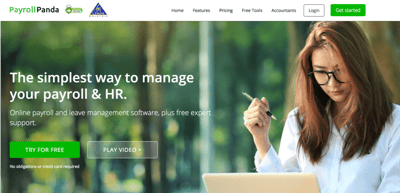CALLS-TO-ACTION THAT ROCK
Calls-to-action (CTA) are the secret sauce to driving people to your offers. If your CTAs aren’t effective at capturing people’s attention and persuading them to the click, then it makes the offer useless.
CTAs can be used on product pages (non-landing pages), in display ads, email, social media, direct mail and pretty much anywhere you can market your offer.
But not all CTAs are created equal. In a world where every brand is fighting for consumers attention, it’s critical that prospects choose your offer over your competitors. In this guide, we’ll uncover tips to creating CTAs that rock.
Every week, we will publish chapters from our ebook where we share tips, tricks and ideas for generating leads.
If you wish to get the full copy of the 32 Greatest Lead Generation Best Practices ebook now, click on the button below:
Now, let's dive in!
#8 Place Your CTA Where the Eye Can See
Calls-to-action do best “above the fold” - the space where your web page is viewable to the user without having to scroll down. According to heat map analysis, anything “below the fold” will only be viewed by 50% of people who visit your page. Doubling impressions on your CTAs can significantly increase your lead count.

Notice the placement of the primary CTA on the Freshbooks homepage. Two buttons for “Try it Free for 30 Days” stand out above the fold.
#9 Clarity Trumps Persuasion
That is one of our favorite phrases we learned from the folks at MarketingExperiments. Often times, marketers will put more focus on being clever than clear. Be crystal clear about what offer is in your CTA. And be specific. If you’re giving away a free guide, say “Download our FREE guide to X.” If you’re hosting a free webinar, say “Register for our FREE webinar on X.” X should clearly convey a compelling benefit of receiving the offer. This is much more effective than “Download Now” or “Get a Free Article.” These simply aren’t specific enough.
Notice that this CTA is to promote a free ebook. There is little copy in this banner ad and a button that indicates it’s clickable.

#10 Use Contrast to Make CTAs Stand Out
A call-to-action is meant to stand out, so if your CTA blends in too much with your site design, no one will notice it. You want as many eyeballs to land on that call-to-action as possible, use contrasting colors to make the CTA stand out, and more importantly, use design to make it clear it is a clickable call-to-action.

While Evernote has a beautifully designed website, the primary call-to-action for their free trial is somewhat buried because the button is the same color as the green background. It would be worth testing to see that if a different color - such as blue, red, or orange - would result in more clicks.
#11 Link Your CTA to a Dedicated Landing Page
This tip might seem minor, but it’s incredible how often businesses miss this opportunity. Calls-to-action are meant to send visitors to a dedicated landing page where they receive a specific offer. Do not use CTAs to drive people to your homepage. Even if your CTA is about your brand or product (and perhaps not an offer like a download), still send them to a targeted landing page that is relevant to what they are looking for. If you have the opportunity to use a CTA, send them to a page that will convert them into a lead.

This CTA for a Twitter ebook drives visitors directly to a landing page for that ebook.
#12 Promote Offers on Product Pages
CTAs shouldn’t be one size fits all. If your company offers various products or services, you may want to consider creating a different offer for each of them. Then you can place CTAs linking to each offer on the website pages that are most relevant to that offer.

In this example, a CTA for “Request a Demo” is placed on a product page. To generate more leads, we might also have a CTA for a “Free Guide to SEO,” because it is related to the product offering.
#13 Thank You Pages Are Great CTA Real Estate
Even if someone completes a form on your website (thus they’ve converted as a lead), don’t stop there. Increasing engagement is also a top priority for marketers so that prospects turn into loyal fans.
Once someone reaches a “thank you page,” the page that a visitor arrives on after completing a form, use that space as an opportunity to promote more offers and content. For example, if a visitor on hubspot.com downloads a guide on email marketing, we can offer them another offer for a Email RFP for a chance to see a demo of our email marketing platform.

PrecallPro, a HubSpot customer, offers a secondary call-to-action for a demonstration on their thank-you page.
#14 Provide Secondary CTAs
Although you should strive to design your page site with a specific, high value action in mind, not all of your visitors are ready to take up your offer. You should provide them with other options to reduce the chance that the visitor will leave. Provide them with other ways that the visitor can stay engaged with your content.

On payrollpanda.my’s website, the main CTA prompts visitors to try their services for free.
But if the visitor is not ready for that, the muted CTA gives the visitor an alternative action to take.
Curious to know other tips you can implement straightaway? Get our 32 Greatest Lead Generation Best Practices ebook now by clicking on the button below:




